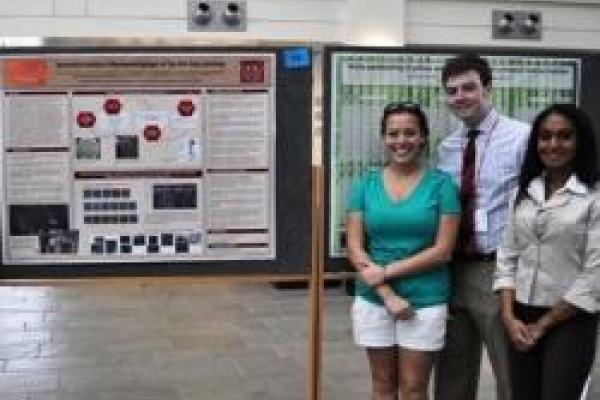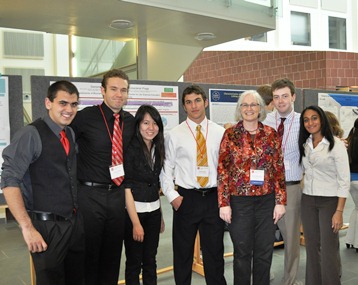Biology class gets down and dirty to study bacterial viruses in the soil

Ohio State’s Center for Life Sciences Education (CLSE) is one of 12 undergraduate biology programs nationwide that successfully competed to participate in the Howard Hughes Medical Institute’s (HHMI) Science Education Alliance (SEA). They join 40 other institutions around the country in the first phase of an experimental initiative to change the way freshmen learn about science.
Studying the genomics of bacterial viruses, or phages, is a natural way for beginning science students to get their hands dirty—literally. This group of viruses is abundant in the environment, is genetically diverse, and impacts both human health and ecosystems.
OSU students isolated and characterized phages from the local soils; prepared the viral DNA for sequencing; then annotated and compared their sequenced genome. Many of these students then presented their findings at a recent research poster session (photos).
Through this course, students not only absorb the process of doing science, but have ownership of their bacteriophage projects. The genomics data that students generate will actually be used by other researchers to answer medical, ecological, and evolutionary questions; this reinforces their understanding of the collaborative nature of science.
SEA was created in 2007 with the long-term goal of developing a series of courses for the sciences that support biomedical education. HHMI committed $4 million over four years to implement the Alliance’s first course, the National Genomics Research Initiative.
This funding provides resources that help science educators offer a yearlong course to freshmen built around meaningful research experiences. The course introduces students to wide-ranging, leading-edge research techniques and ideas that draw from microbiology, molecular biology, electron microscopy, and bioinformatics.
CLSE Director Caroline Breitenberger said, “When my colleague, microbiologist Chuck Daniels, and I started working on the proposal to join HHMI’s Science Education Alliance, the initial hook for us was the idea of engaging freshmen in authentic research in our teaching labs.”
“We are thrilled to be able to offer this lab to incoming freshmen and join participants around the nation in evaluating the effect this early research experience has on retention in STEM fields.”

